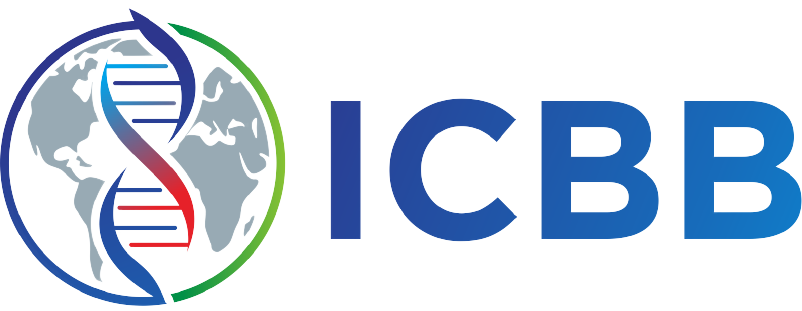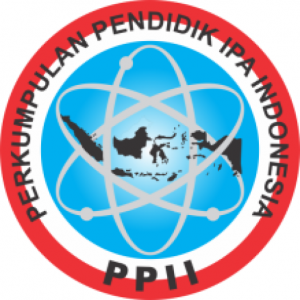Molecular Mechanism of Trichoderma harzianum Secondary Metabolites in Inhibiting Cellulase Protein of Colletotrichum capsici
Authors
Gilang Vaza Benatar , Yeyet Nurhayati , Nur Fathurahman Ridwan , Aisyah AisyahDOI:
10.29303/jbt.v25i1.8475Published:
2025-01-30Issue:
Vol. 25 No. 1 (2025): Januari - MaretKeywords:
Anthracnose, chili, homology modeling, molecular docking, molecular dynamics,Articles
Downloads
How to Cite
Downloads
Metrics
Abstract
Fungal diseases in agriculture pose significant challenges to food security, necessitating sustainable biocontrol solutions. Trichoderma harzianum, a biocontrol agent, exhibits potent antifungal properties through its secondary metabolites. This study investigates the inhibitory mechanism of T. harzianum metabolites on the cellulase protein of Colletotrichum capsici, the causative agent of chili anthracnose, using molecular docking and dynamics simulations. The cellulase protein, crucial for plant cell wall degradation, was modeled through homology techniques, and its interactions with T, harzianum metabolites—cyanuric chloride, palmitinic acid, and massoia lactone—were analyzed. Massoia lactone demonstrated the highest inhibitory potential, with stable binding interactions confirmed through molecular dynamics. These findings provide insights into developing environmentally sustainable antifungal strategies. Further research is recommended to optimize the application of T. harzianum metabolites as biopesticides.
References
Annad, A. (2020). Management of anthracnose of red chilli caused by colletotrichum capsici. Annals of Plant and Soil Research, 390-395. https://doi.org/10.47815/apsr.2020.10010.
Brauer, V. S., Rezende, C. P., Pessoni, A. M., Paula, R. G. d., Rangappa, K. S., Nayaka, S. C., & Almeida, F. (2019). Antifungal agents in agriculture: friends and foes of public health. Biomolecules, 9(10): 521. https://doi.org/10.3390/biom9100521.
Collier, L. A., Ghosh, A., & Borkovich, K. A. (2020). Heterotrimeric g-protein signaling is required for cellulose degradation in neurospora crassa. mBio, 11(6). https://doi.org/10.1128/mbio.02419-20.
Hamzah, H., Nuryastuti, T., Rahmah, W., Chabib, L., Syamsul, E. S., Lestari, D., & Tunjung Pratiwi, S. U. (2023). Molecular docking study of the c-10 massoia lactone compound as an antimicrobial and antibiofilm agent against candida tropicalis. The Scientific World Journal, 1-10. https://doi.org/10.1155/2023/6697124.
Hao, G., Dong, Q., & Yang, G. (2011). A comparative study on the constitutive properties of marketed pesticides. Molecular Informatics, 30(6-7): 614-622. https://doi.org/10.1002/minf.201100020.
Hao, G., Yang, S., Huang, W., Wang, L., Shen, Y., Tu, W., & Yang, G. (2015). Rational design of highly potent and slow-binding cytochrome bc1 inhibitor as fungicide by computational substitution optimization. Scientific Reports, 5(1). https://doi.org/10.1038/srep13471.
Hassan, A. U., Jafaru, R., Mato, I., Kereakede, E., Galadanci, A. H., Madu, A. H., & Ozojiofor, U. O. (2021). Isolation and biochemical characterization of cellulase produced by bacterial isolates from sugarcane waste soil. Asian Journal of Biochemistry, Genetics and Molecular Biology, 28-35. https://doi.org/10.9734/ajbgmb/2021/v9i230213.
Lakhdari, W., Benyahia, I., Bouhenna, M.M., Bendif, H., Khelafi, H., Bachir, H., Ladjal, A., Hammi, H., Mouhoubi, D., Khelil, H., Alomar, T.S., AlMasoud, N., Boufafa, N., Boufahja, F., & Dehliz, A. (2023). Exploration and Evaluation of Secondary Metabolites from Trichoderma harzianum: GC-MS Analysis, Phytochemical Profiling, Antifungal and Antioxidant Activity Assessment. Molecules, 28. https://doi.org/10.3390/molecules28135025.
Lee, Y., Park, S. J., Kim, K., Kim, T., & Lee, S. (2023). Antifungal and antiaflatoxigenic activities of massoia essential oil and c10 massoia lactone against aflatoxin-producing aspergillus flavus. Toxins, 15(9): 571. https://doi.org/10.3390/toxins15090571.
Li, Y., Zhang, H., Chi, Z., & Liu, G. (2022). Making of massoia lactone-loaded and food-grade nanoemulsions and their bioactivities against a pathogenic yeast. Journal of Marine Science and Engineering, 10(3): 339. https://doi.org/10.3390/jmse10030339.
Li Y, Wei J, Yang H, Dai J, Ge X. (2021). Molecular dynamics investigation of the interaction between Colletotrichum capsici cutinase and berberine suggested a mechanism for reduced enzyme activity. PLoS One, 16(2): e0247236. https://doi.org/10.1371/journal.pone.0247236.
Lin, Y., Tan, C., Song, J., Yang, Q., Yu, L., & Li, X. (2016). Isolation and expression of two polyketide synthase genes from Trichoderma harzianum 88 during mycoparasitism. Brazilian Journal of Microbiology, 47(2): 468-479. https://doi.org/10.1016/j.bjm.2016.01.004
Mallikarjunaswamy, G. E. (2018). Colletotrichum diseases of forest nurseries and their biological management in vitro using rhizoplane mycoflora of grasses. International Journal for Research in Applied Science and Engineering Technology, 6(4): 4356-4361. https://doi.org/10.22214/ijraset.2018.4713
Naziya, B., Murali, M., & Amruthesh, K. N. (2019). Plant growth-promoting fungi (PGPF) instigate plant growth and induce disease resistance in Capsicum annuum L. upon infection with Colletotrichum capsici (Syd.) Butler & Bisby. Biomolecules, 10(1): 41. https://doi.org/10.3390/biom10010041
Padghan, P., Mondal, B., & Gade, R. (2023). In vitro efficacy of different fungicides against Colletotrichum capsici causing anthracnose of chilli. Plant Archives, 23(2). https://doi.org/10.51470/plantarchives.2023.v23.no2.068
Puripunyavanich, V., Na Nan, T., Suwan, N., Orpong, P., Picha, R., Maikaeo, L., & Bhasabuttra, T. (2024). Breeding for anthracnose disease resistance in chili pepper (Capsicum annuum L.) using gamma irradiation. Trends in Sciences, 21(8): 7709. https://doi.org/10.48048/tis.2024.7709
Sanya, F. B., Kayode, A. F., & Afolayan, A. (2012). Characterization of a cellulase from the haemolymph of the giant African snail (Archachatina marginata). African Journal of Biotechnology, 11(38). https://doi.org/10.5897/ajb10.2071
Saxena, A., Raghuwanshi, R., & Singh, H. B. (2014). Molecular, phenotypic and pathogenic variability in Colletotrichum isolates of subtropical region in north-eastern India, causing fruit rot of chillies. Journal of Applied Microbiology, 117(5): 1422-1434. https://doi.org/10.1111/jam.12607
Sm, J., S, D. B., Jogaiah, S., & Si, I. (2019). Mycogenic selenium nanoparticles as potential new generation broad spectrum antifungal molecules. Biomolecules, 9(9): 419. https://doi.org/10.3390/biom9090419
Trellet, M., Férey, N., Baaden, M., & Bourdot, P. (2015). Content and task based navigation for structural biology in 3D environments. 2015 IEEE 1st International Workshop on Virtual and Augmented Reality for Molecular Science (VARMS@IEEEVR). https://doi.org/10.1109/varms.2015.7151726
Uniyal, K., & Singh, Y. P. (2017). Evaluation of antagonist activity of Trichoderma species against Alternaria alternata isolated from Populus deltoides. International Journal of Life-Sciences Scientific Research, 3(3). https://doi.org/10.21276/ijlssr.2017.3.3.18
Wang, P., Zhang, M., Zhao, S., Zhang, Z., Liu, G., Chi, Z., & Chi, Z. (2024). Liamocins overproduction via the two‐ph stage fermentation and anti‐Aspergillus flavus activity of massoia lactone. Biotechnology Journal, 19(2). https://doi.org/10.1002/biot.202300675
Wu, S., Li, H., & Ma, A. (2022). A rigorous method for identifying a one-dimensional reaction coordinate in complex molecules. Journal of Chemical Theory and Computation, 18(5): 2836-2844. https://doi.org/10.1021/acs.jctc.2c00132
Yan, S., & Wu, G. (2013). Secretory pathway of cellulase: a mini review. Biotechnology for Biofuels, 6(1): 177. https://doi.org/10.1186/1754-6834-6-177
Yanti, Y., Hamid, H., Reflin, & Yaherwandi. (2023). The ability of chitinolytic bacteria to control Colletotrichum capsici in chili plants. IOP Conference Series: Earth and Environmental Science, 1228(1): 012020. https://doi.org/10.1088/1755-1315/1228/1/012020
Zeng, R., Qiao, H., Yin, X., Huang, H., Yan, J., Gong, Z., & Yang, Z. (2016). Cloning a novel endo-1,4-β-D-glucanase gene from Trichoderma virens and heterologous expression in E. coli. AMB Express, 6(1). https://doi.org/10.1186/s13568-016-0282-0
Zhang, M., Gao, Z., Chi, Z., Wang, Z., Liu, G., Li, X., & Huang, Z. (2021). Massoia lactone displays strong antifungal property against many crop pathogens and its potential application. Microbial Ecology, 84(2): 376-390. https://doi.org/10.1007/s00248-021-01885-7.
License
Copyright (c) 2025 Gilang Vaza Benatar, Yeyet Nurhayati, Nur Fathurahman Ridwan, Aisyah Aisyah

This work is licensed under a Creative Commons Attribution 4.0 International License.

Jurnal Biologi Tropis is licensed under a Creative Commons Attribution 4.0 International License.
The copyright of the received article shall be assigned to the author as the owner of the paper. The intended copyright includes the right to publish the article in various forms (including reprints). The journal maintains the publishing rights to the published articles.
Authors are permitted to disseminate published articles by sharing the link/DOI of the article at the journal. Authors are allowed to use their articles for any legal purposes deemed necessary without written permission from the journal with an acknowledgment of initial publication to this journal.


























